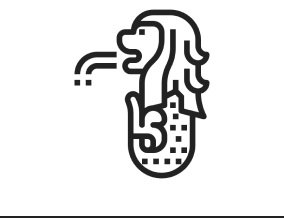Implementing SAP Business Warehouse (SAP BW) can be a game-changer for any organization aiming to streamline data management and enhance reporting capabilities. SAP BW provides a comprehensive platform to consolidate, transform, and analyze data from various sources, enabling informed decision-making.
If you are planning to implement SAP BW or looking to improve your current setup, this guide will walk you through the essential steps to ensure a successful implementation.
What is SAP BW?
SAP BW, short for SAP Business Warehouse, is an enterprise data warehousing and reporting platform developed by SAP. It allows organizations to consolidate data from various SAP modules (such as SAP ECC, CRM, S/4HANA) and non-SAP systems into a single source of truth.
With SAP BW, businesses can transform raw data into actionable insights through robust data modeling, extraction, and reporting functionalities.
SAP BW supports complex analytical processes, enabling multidimensional analysis, predictive analytics, and real-time reporting. It is the backbone for many SAP business intelligence landscapes.
Why Should Your Organization Implement SAP BW?
The growing volume and complexity of enterprise data demand a centralized data management solution. Implementing SAP BW can help your organization by:
- Centralizing Data Storage: Aggregating data from diverse operational systems into one warehouse reduces data silos.
- Enhancing Data Quality: Data cleansing and transformation processes ensure consistent, accurate, and trustworthy data.
- Improving Reporting Efficiency: Pre-modeled InfoProviders enable faster query execution and reporting.
- Supporting Strategic Decisions: Comprehensive and timely analytics help leaders make informed business decisions.
- Integrating with SAP and Third-Party Tools: Seamlessly connect with SAP ERP, CRM, SCM, and external databases.
- Scaling for Future Growth: The flexible architecture allows for scaling data volume and complexity over time.
SAP BW Implementation Guide: Step-by-Step
1. Requirement Gathering and Business Analysis
The foundation of any successful SAP BW implementation lies in thoroughly understanding the business’s data and reporting requirements.
- Engage Stakeholders: Collaborate with business users, data owners, IT teams, and executives to understand their reporting needs and expectations.
- Identify Key Business Processes: Determine which processes (e.g., sales, finance, inventory management) require data consolidation and analysis.
- Analyze Source Systems: Document existing data sources, formats, frequency of updates, and data quality challenges.
- Define KPIs and Reporting Requirements: Outline critical performance indicators, dashboards, and reports to be generated.
A comprehensive requirements document should be created and signed off by all stakeholders before moving forward.
2. Conceptualizing the Data Model and Architecture
Based on the requirements, the next step is to design a scalable and flexible data model.
- Define InfoObjects: These are the smallest units of data (characteristics and key figures) that represent business entities like customers, products, or sales amounts.
- Choose InfoProviders: These are storage structures like DataStore Objects (DSO) for detailed data, InfoCubes for multidimensional analysis, and CompositeProviders for combining data.
- Plan Data Flows: Define how data will be extracted, transformed, and loaded (ETL) into the BW system.
- Consider Data Volume and Performance: Design the data model to optimize query performance and reduce loading times.
The architecture should align with your organization’s future growth plans and integrate smoothly with existing IT infrastructure.
3. Infrastructure Setup and Landscape Design
Choosing the right infrastructure is crucial for performance and reliability.
- Decide Deployment Type: On-premise installations offer control, while cloud or hybrid models provide scalability and cost advantages.
- Prepare Hardware and Software: Set up SAP BW servers, underlying databases (such as SAP HANA for real-time analytics), and necessary OS configurations.
- Ensure Security and Compliance: Implement firewalls, user roles, and authorization concepts to protect sensitive data.
- Establish Network Connectivity: Make sure all source systems and end-users can reliably connect to the BW system.
Proper infrastructure planning prevents bottlenecks and supports high availability.
4. Data Extraction, Transformation, and Loading (ETL)
The core of SAP BW lies in efficiently extracting data from source systems, transforming it as per business logic, and loading it into BW structures.
- Identify Data Sources: These could be SAP modules like ECC, external databases, flat files, or cloud platforms.
- Configure DataSources: Define extraction methods using SAP standard connectors or custom tools.
- Design Transformations: Apply business rules, data cleansing, and enrichment during the data loading process.
- Perform Initial and Delta Loads: Load historical data first, followed by periodic incremental updates to keep data current.
Automating ETL processes using Process Chains ensures timely and error-free data updates.
5. Data Modeling and Development in SAP BW
Once data flows are established, the next step involves detailed modeling:
- Create and Maintain InfoObjects: Manage master data attributes and key figures that define your reporting granularity.
- Develop DataStore Objects (DSOs): Store transactional and detailed data for granular reporting and analysis.
- Build InfoCubes: Enable fast multidimensional analysis by organizing data into fact and dimension tables.
- Develop CompositeProviders and Open ODS Views: Combine data sources for complex reporting scenarios.
- Define Transformations and DTPs (Data Transfer Processes): Customize data transformation logic and data movement.
- Configure Process Chains: Automate and schedule data loads, indexes, and housekeeping tasks.
Ensure all development follows SAP best practices and naming conventions to maintain system consistency.
6. Reporting and Analytics Setup
After data is available in BW, set up reporting tools to provide business users with the insights they need.
- Use BEx (Business Explorer) Tools: Design queries, workbooks, and web templates tailored to user requirements.
- Integrate with SAP Analytics Cloud (SAC): Leverage advanced visualization, planning, and predictive analytics.
- Enable Self-Service BI: Provide users with tools to create ad-hoc reports and dashboards.
- Set Up Security Roles: Control access to reports and data based on user roles.
This phase transforms raw data into actionable business intelligence.
7. Testing
Thorough testing ensures data accuracy and system stability.
- Unit Testing: Verify individual components like data extraction, transformation, and loading processes.
- Integration Testing: Validate end-to-end data flows and report outputs across systems.
- Performance Testing: Assess system response times under load.
- User Acceptance Testing (UAT): Business users verify that reports and analytics meet their expectations.
Addressing issues early reduces risks during go-live.
8. Training and Documentation
Successful adoption depends on well-trained users and clear documentation.
- Conduct Training Sessions: Tailor training for end-users, data administrators, and support teams.
- Prepare User Manuals: Include step-by-step guides on using reports, dashboards, and maintaining the system.
- Maintain Technical Documentation: Document data models, ETL processes, security setups, and troubleshooting procedures.
Good documentation supports ongoing maintenance and future upgrades.
9. Go-Live and Support
With everything tested and users trained, it’s time to transition to production.
- Finalize Data Loads: Execute full and incremental loads to ensure data completeness.
- Switch to Production: Cutover from legacy systems and start using SAP BW for reporting.
- Monitor System Performance: Track load times, query performance, and error logs.
- Establish Support Processes: Create help desks, escalation paths, and maintenance schedules.
Post-go-live support ensures stability and continuous improvement.
Best Practices to Ensure a Successful SAP BW Implementation
- Early and Continuous Stakeholder Involvement: Regular feedback helps align the system with business needs.
- Follow SAP Standards: Utilize SAP’s predefined objects and processes to reduce custom development and future compatibility issues.
- Automate Processes: Use Process Chains to minimize manual intervention and errors.
- Plan for Scalability: Design data models and infrastructure with future growth in mind.
- Maintain Data Governance: Define data ownership, quality checks, and audit trails.
- Regularly Review and Optimize: Monitor system usage and refine queries and models for better performance.
Conclusion
Implementing SAP BW is a complex but rewarding endeavor that can significantly improve your organization’s data management and decision-making capabilities. By following a structured and detailed implementation guide like this, you can mitigate risks, ensure stakeholder satisfaction, and build a robust data warehouse that supports your business goals.
Whether you are new to SAP BW or looking to enhance an existing system, investing time in proper planning, design, testing, and training will pay dividends in the long run.
If you need expert assistance or have questions about SAP BW implementation, feel free to reach out. Together, we can unlock the true power of your enterprise data!






